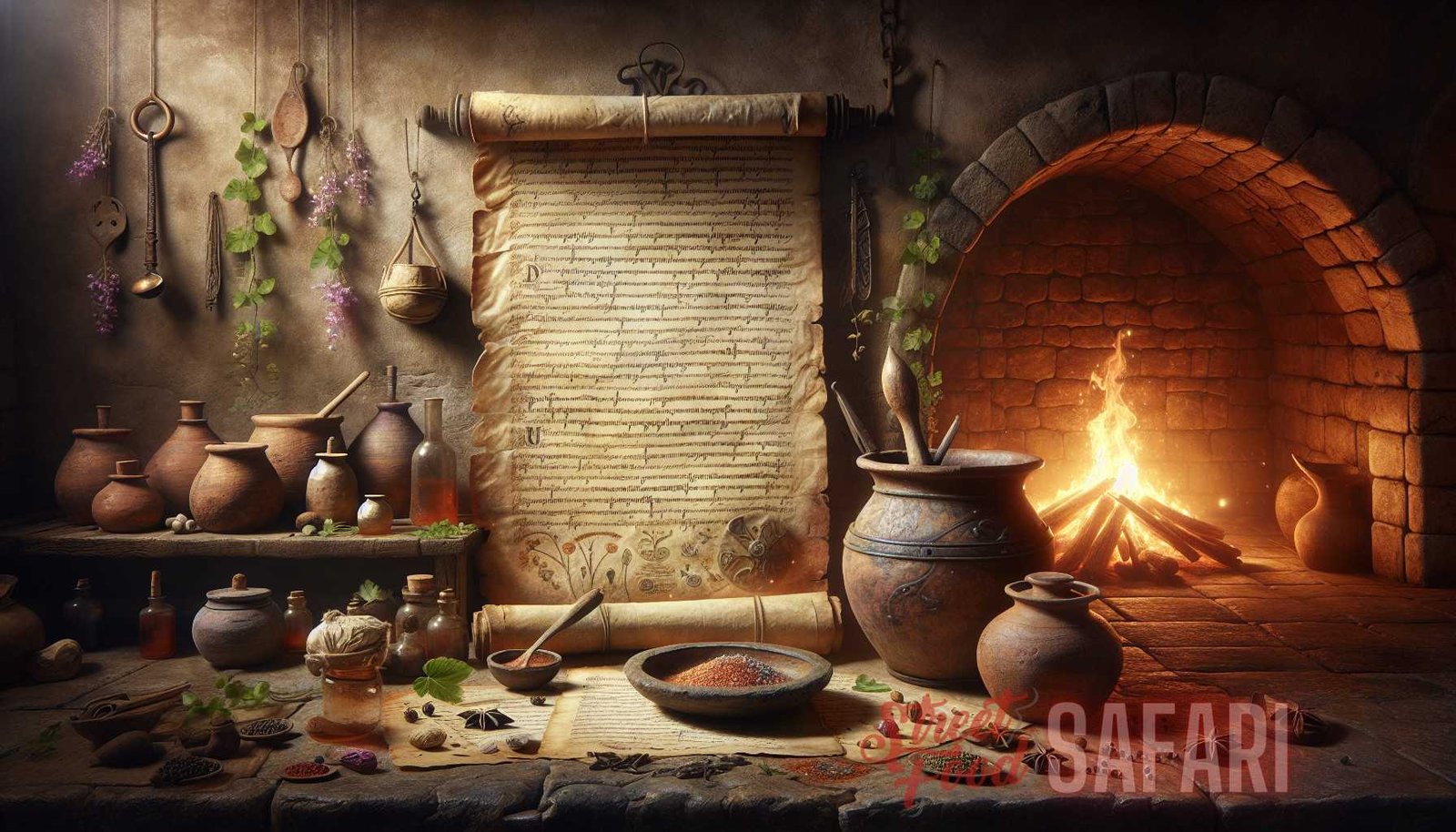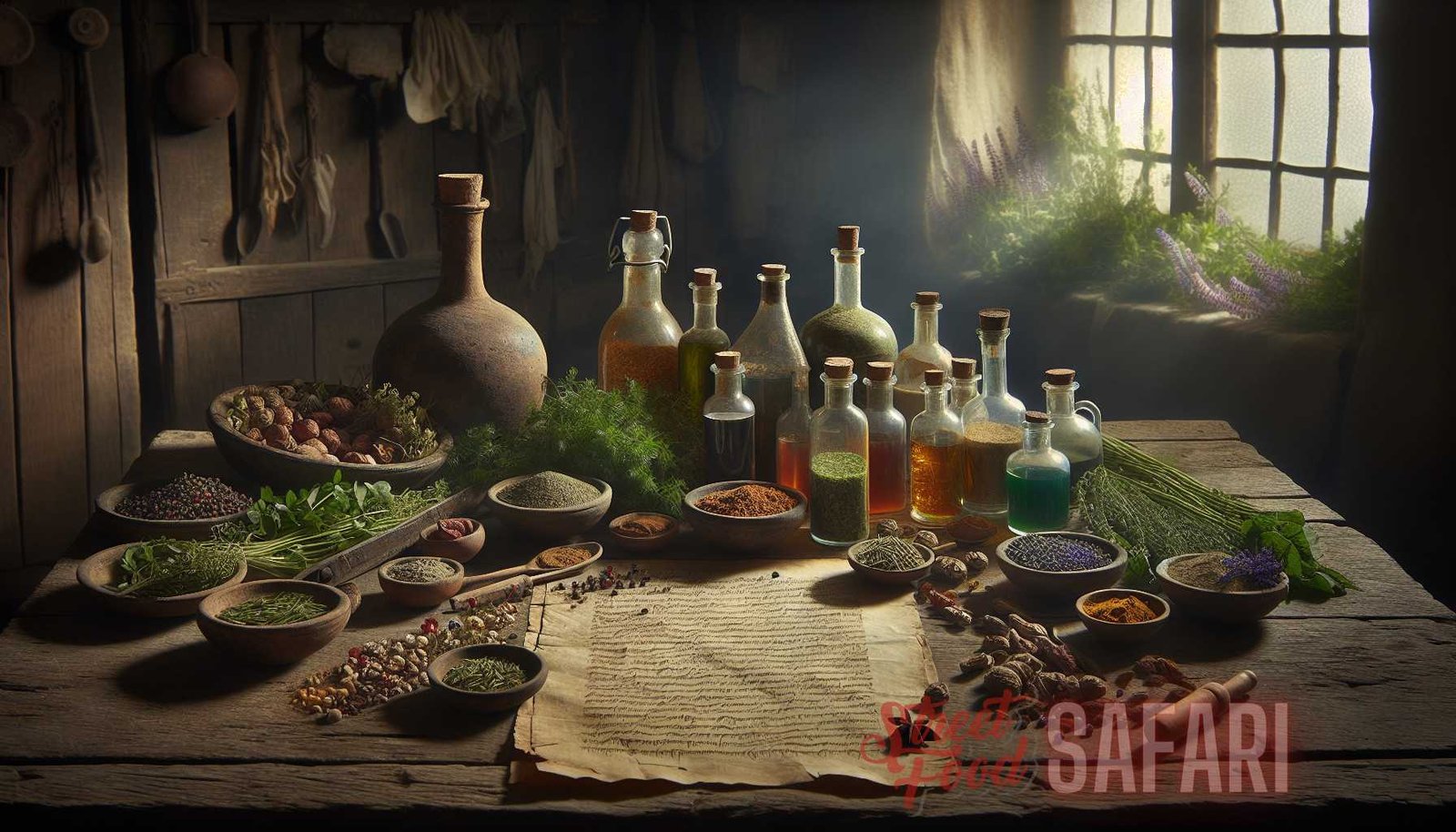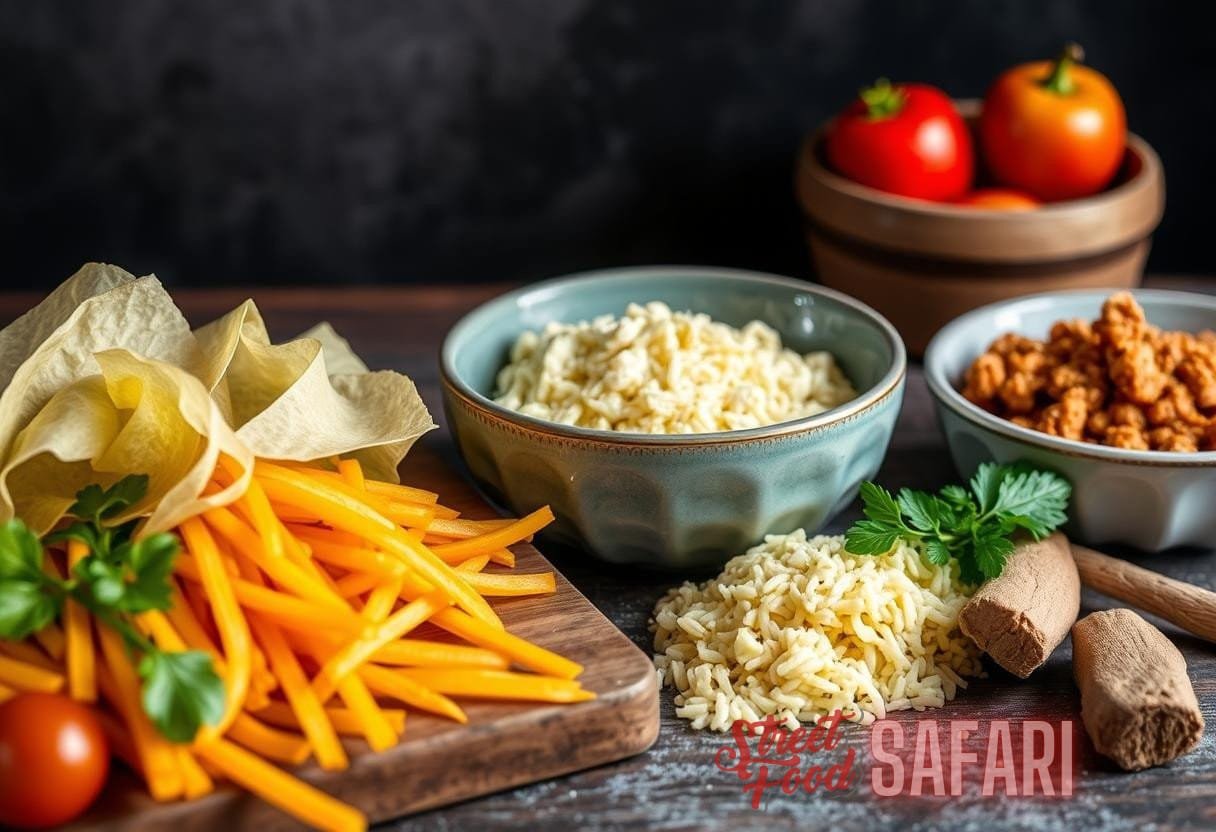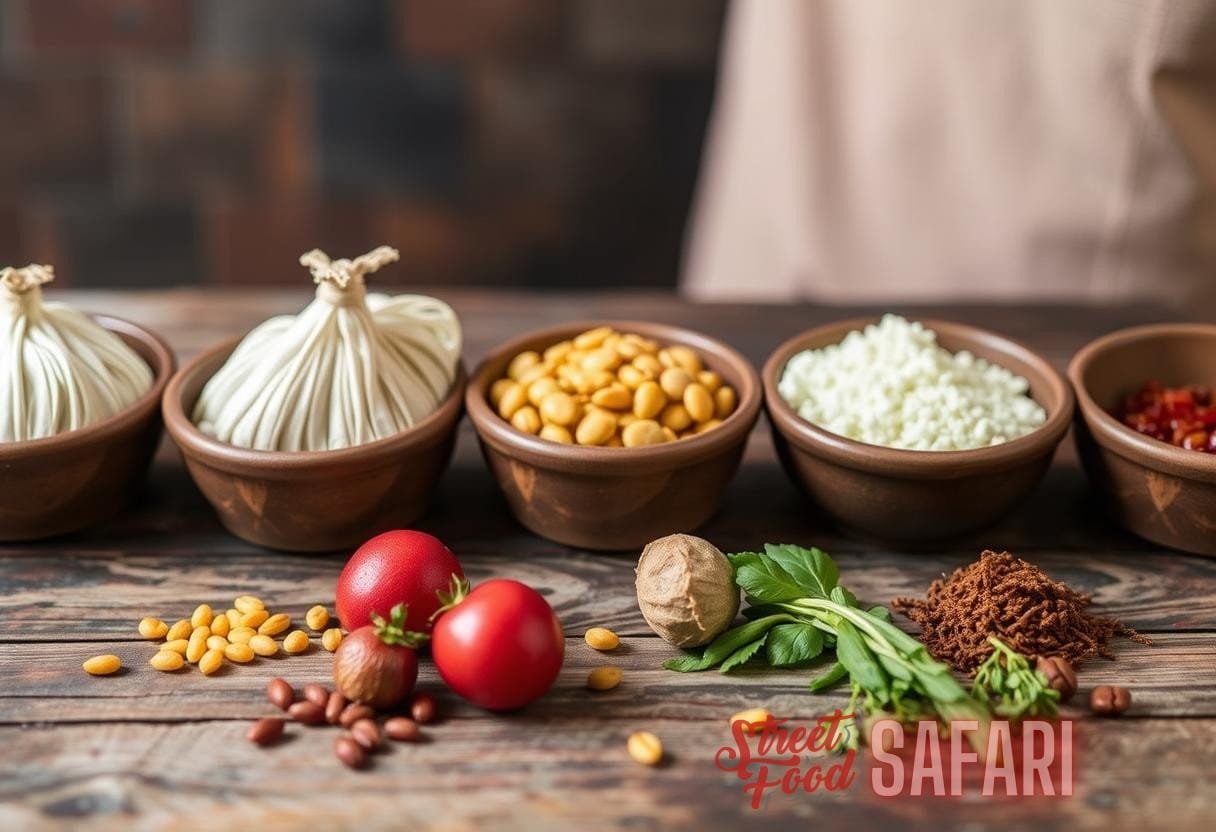Ancient Elixirs and Culinary Transformations: Unearthing Hidden Potions in Local Delicacies
Ancient elixirs and culinary transformations have been an integral part of human culture for centuries. These mysterious potions, created through the careful blending of herbs, spices, and other natural ingredients, have both tantalized and nourished generations. Today, we embark on a journey to explore the ancient elixirs and culinary transformations hidden within local delicacies, uncovering the secrets of these age-old recipes and the myths that surround them.
The Origins of Ancient Elixirs
Ancient elixirs have their roots deeply entwined with the dawn of human civilization. In cultures around the world, from the East to the West, people have sought to harness the power of nature to create potent concoctions that can heal, invigorate, and transcend the ordinary.
One of the earliest examples of ancient elixirs can be found in Ancient China, where alchemists and herbalists experimented with combining various herbs and minerals in search of immortality. These elixirs, known as “Golden Elixirs,” were believed to grant eternal life to those who consumed them. While the quest for immortality may have been fruitless, the knowledge gained from these experiments laid the foundation for traditional Chinese medicine and the creation of countless herbal remedies.
In Ancient Egypt, alchemy and the creation of elixirs were closely tied to religious beliefs and rituals. The Egyptians believed that the gods bestowed their blessings upon certain plants and substances, imbuing them with extraordinary powers. One of the most famous elixirs from this period is the “Kyphi,” a sacred incense made from a multitude of aromatic ingredients. This fragrant potion was used in religious ceremonies, believed to connect the mortal realm with the divine.
The ancient Greeks also had their fair share of elixirs, most notably the “Elixir of Life” and the “Elixir of Youth.” These legendary potions were said to bestow immortality and eternal youth upon those who consumed them. While these elixirs may be the stuff of myth and legend, they reflect the human desire for longevity and the pursuit of eternal youth.
Throughout history, elixirs have played a significant role in healing and wellness practices. In ancient India, Ayurvedic medicine utilized elixirs known as “Rasayanas” to restore balance and promote longevity. In the Americas, indigenous cultures used herbal concoctions to heal both the body and the spirit.
The Culinary Transformations of Local Delicacies
Ancient elixirs are not limited to medicinal purposes alone. They have also been woven into the fabric of local cuisines, transforming ordinary ingredients into extraordinary delicacies that delight the senses.
In many cultures, spices and herbs hold a special place in culinary traditions. These seemingly humble ingredients possess remarkable flavors, aromas, and medicinal properties. From the fiery chilies of Mexico to the fragrant spices of India, these ancient elixirs add depth and complexity to dishes.
Take, for example, the Indian spice blend known as “garam masala.” This aromatic mixture of spices, including cinnamon, cardamom, and cloves, has been used for centuries to elevate the flavors of countless dishes. Its warm and earthy undertones add a touch of magic to curries, stews, and even desserts.
In Mexico, the transformative power of ancient elixirs can be found in the traditional method of preparing “mole.” Mole is a rich sauce made from a medley of ingredients, including chili peppers, chocolate, nuts, and spices. The combination of these flavors creates a symphony of taste that is both sweet, savory, and spicy, turning humble ingredients into a culinary masterpiece.

The culinary transformations brought about by ancient elixirs extend beyond just spices and herbs. Fermentation, a process that dates back thousands of years, is another ancient technique used to impart unique flavors and transform ingredients.
One example of this is kimchi, a traditional Korean side dish made from fermented vegetables, most commonly cabbage. During the fermentation process, beneficial bacteria break down the sugars in the cabbage, creating a tangy, sour, and slightly fizzy dish that is rich in probiotics and umami flavor.
Exploring Local Delicacies
Embarking on a culinary journey to explore local delicacies is an opportunity to discover the ancient elixirs and culinary transformations hidden within each culture. It’s a chance to taste the flavors of history and immerse oneself in the rich tapestry of human civilization.
In Thailand, for instance, the flavors of lemongrass, galangal, and kaffir lime leaves are used to create the famous recipe for Tom Yum soup. The combination of these ingredients, along with chili peppers, fish sauce, and lime juice, results in a fiery, sour, and fragrant soup that is both refreshing and comforting.
In Italy, the ancient elixirs of olive oil and balsamic vinegar are integral parts of the culinary tradition. Olive oil, pressed from the fruit of the olive tree, is not only a staple in Italian cooking but also a symbol of the Mediterranean way of life. Balsamic vinegar, made from the reduction of grape juice, takes years to mature and develop its characteristic sweet and tangy flavor. These ancient elixirs enhance the flavors of traditional Italian dishes, from pasta to bruschetta.
The exploration of local delicacies is not limited to just one region or cuisine. In every corner of the world, there are hidden gems waiting to be discovered. From the street food stalls of Southeast Asia to the Michelin-starred restaurants of Europe, the ancient elixirs and culinary transformations of local delicacies offer a tantalizing glimpse into the diverse flavors and traditions of our planet.
Conclusion
Ancient elixirs and culinary transformations are a testament to the ingenuity, creativity, and resourcefulness of human beings. Through the blending of herbs, spices, and natural ingredients, cultures across the globe have unlocked the secrets of nature, harnessing its power to create potions that heal, nourish, and delight.
From the ancient elixirs of China to the culinary transformations of local delicacies, the world of food and drink is a vast cornucopia of flavors and traditions. It is a reminder of our shared humanity and the universal desire to explore, discover, and savor new experiences.
So, the next time you sit down to enjoy a meal, take a moment to appreciate the ancient elixirs and culinary transformations that have brought those flavors to life. Raise a glass and toast to the rich heritage of local delicacies, and the ancient traditions that continue to shape our culinary landscape.
For more information on local flavors and ancient delicacies, check out these articles:


